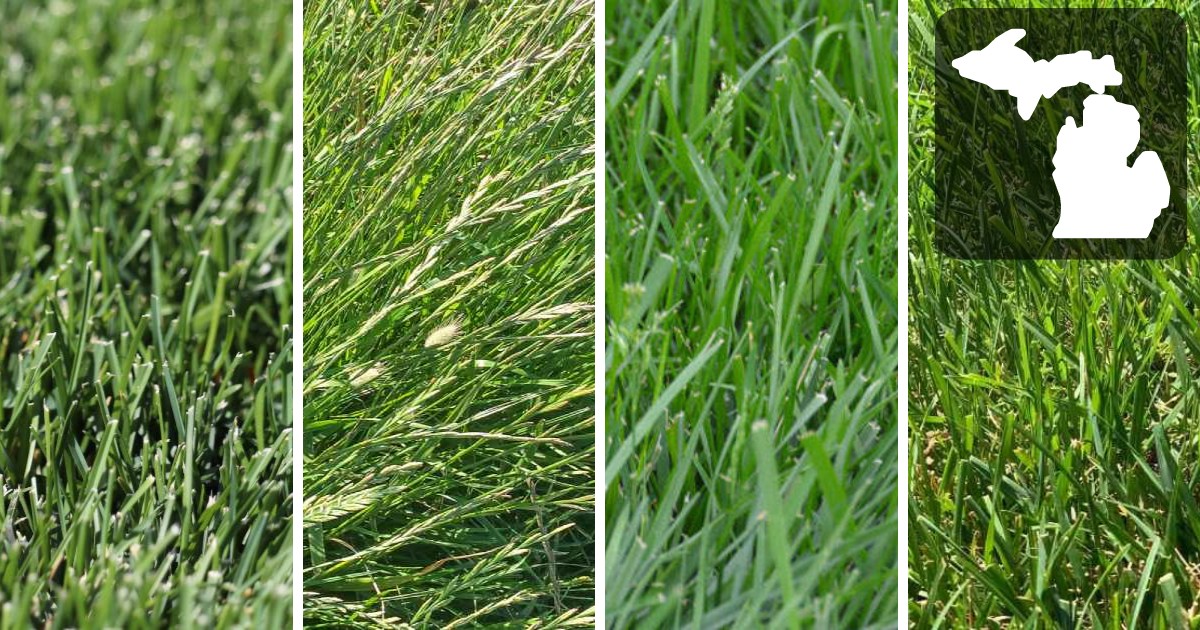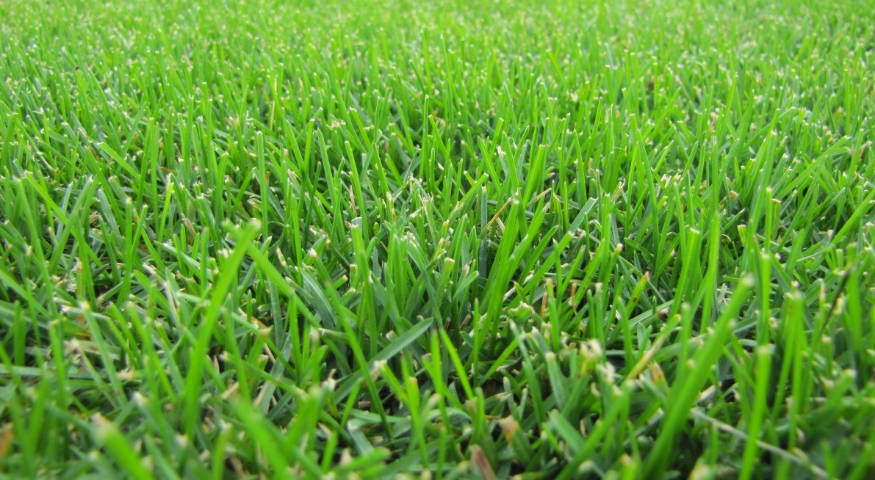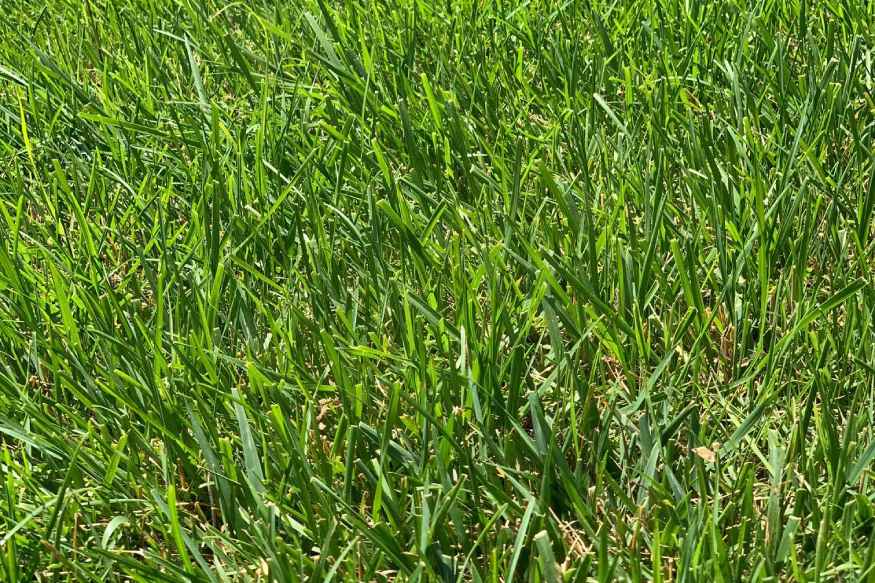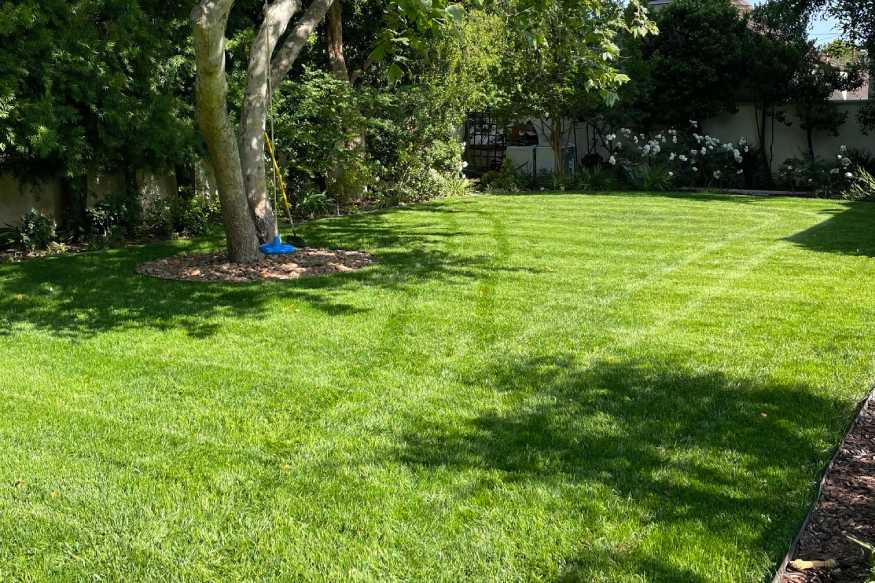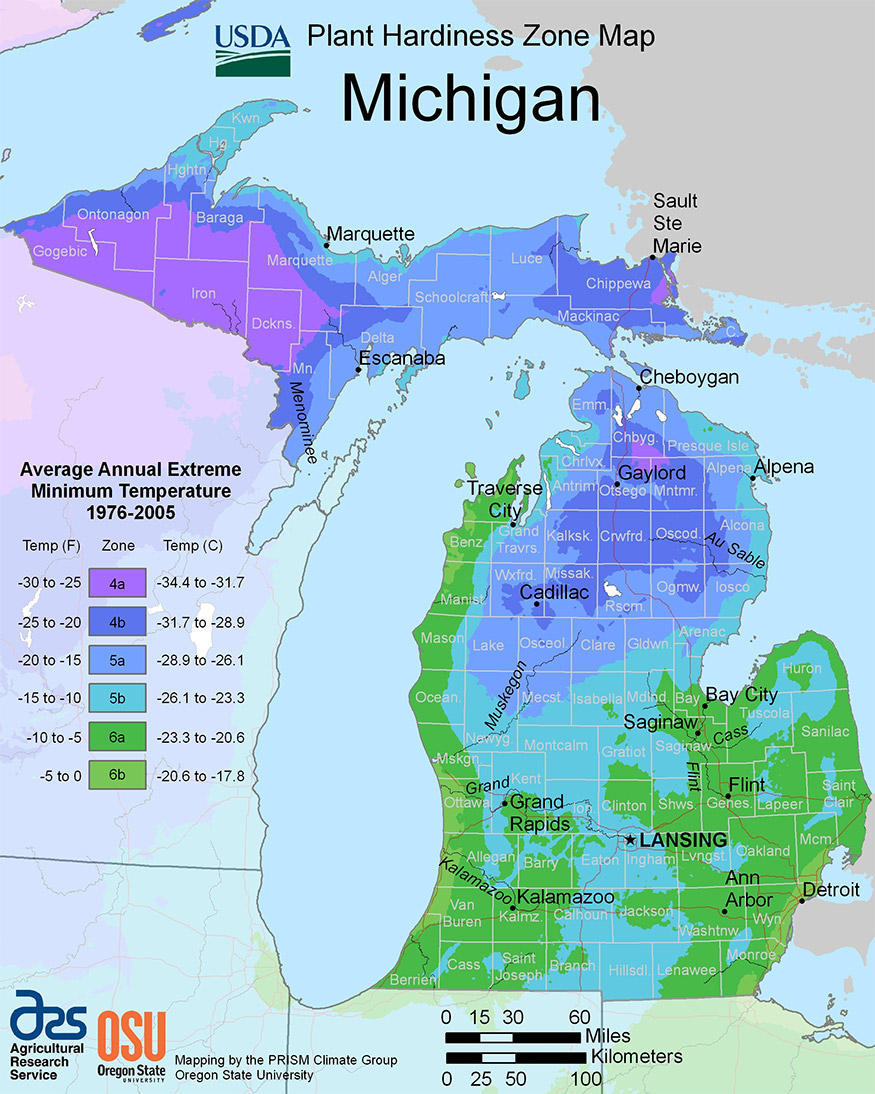When it comes to choosing the best grass seed for Michigan, there are a few key factors to consider. The state’s climate and soil conditions can make it a bit of a challenge to grow a lush, healthy lawn. However, with the right grass seed and a little bit of know-how, you can create a beautiful outdoor space to enjoy.
The quick answer is that Kentucky Bluegrass is an excellent choice for Michigan lawns. But, as with most things in life, the devil is in the details. In this article, we’ll take a closer look at the different types of grass seed that thrive in Michigan’s climate, as well as some of the challenges you may face when trying to grow a lawn in this area.
Whether you’re a seasoned pro or a first-time homeowner, you’re sure to find some useful tips and insights to help you create the lawn of your dreams.
Kentucky Bluegrass
| Also Known As | Poa pratensis L. |
| Type of Grass | Cool season perennial |
| Optimal Zones | Northern cool season zone, transition zones |
| Root Structure | Shallow |
| Winter hardiness | Excellent |
| Shade tolerance | Poor to Good |
| Water Requirements | High |
| Drought Tolerance | Poor |
| Self Repair Capacity | Excellent |
| Overall Maintenance Requirements | High |
Why Kentucky Bluegrass is a good choice for Michigan
Kentucky bluegrass, with its fine- to medium-textured turf that forms a dense, green lawn, is an ideal choice for Michigan’s well-drained, moist and slightly acidic soil with moderate to high levels of fertility.
Its rhizomatous growth habit means that it can quickly recover from injury and form an aggressive sod, making it the most popular turfgrass species in Michigan, suitable for lawns, golf turf, athletic fields, and other general-purpose turfs.
While slow to establish, Kentucky bluegrass grows rapidly during cool, moist weather and requires 2 to 6 pounds of nitrogen per 1,000 square feet per growing season and 1 to 1 1/2 inches of water per week during the growing season to maintain high-quality turf. The recommended mowing height is 2 to 3 inches, and a blend of two to four cultivars should be used for better performance.
Although new selections of cultivars are constantly being introduced, no single cultivar provides ideal performance under every condition, and disease resistance can change as new strains of diseases appear. Kentucky bluegrass is best suited to well-drained soils and moderate to high levels of sunlight. With proper management, it will form a high-quality, long-lasting turf, but it does require at least four applications of fertilizer per season and frequent irrigation during hot, dry periods for a weed-free lawn.
Kentucky bluegrass is an excellent choice for Michigan’s lakeshore regions with sandy soils, but it can be grown successfully across the entire state with its hardiness zones spanning from 2 to 7.
Despite being more susceptible to lawn diseases and pests, Kentucky bluegrass is a good choice for patching bare spots as it grows quickly and recovers from damage. With its aggressive sod-forming nature, it is well-suited for heavily trafficked areas, and it will tolerate light shade or full sun.
Learn More: Read our comprehensive state by state grass selection guides.
Tall Fescue
| Also Known As | Hard fescue, strong creeping red fescue, slender creeping red fescue, sheep fescue, chewings fescue; Festuca L. |
| Type of Grass | Cool season perennial |
| Optimal Zones | Northern zones |
| Root Structure | Medium |
| Winter hardiness | Excellent |
| Shade tolerance | Excellent |
| Water Requirements | Medium to High |
| Drought Tolerance | Excellent |
| Self Repair Capacity | Limited |
| Overall Maintenance Requirements | Low |
Why Tall Fescue Grows Well in Michigan
For Michigan homeowners seeking a grass species that can handle the state’s harsh winter weather, tall fescue may be the answer. With its deep, winter-hardy roots, tall fescue is a tough and durable grass that can survive heavy traffic, droughts, and even some periods of submersion.
While it may not grow back after heavy snowfall, tall fescue is an ideal choice for the Lower Michigan area, where a new generation of finer-textured, drought-tolerant varieties have shown minimal disease and insect problems, as well as good performance on dry, sandy sites in sun and shade. Its low maintenance and fertility requirements make it an eco-friendly choice, and its good drought tolerance means it can survive most Michigan summers without supplemental irrigation.
Tall fescue’s bunch-type growth habit means it should not be mixed with other grass species, but it is perfect for lawns with frequent foot traffic, pets, and children.
With excellent wear tolerance, tall fescue can handle heavy use, but it has poor recuperative ability.
Mowing height is 2 to 3.5 inches, and 2 to 3 pounds of nitrogen per 1,000 square feet per growing season is recommended.
While juvenile tall fescue seedlings are not cold-tolerant and may experience winterkill, established tall fescue will endure most Michigan winters, with brown patch being a potential disease problem during dry summers.
Perennial Ryegrass
| Also Known As | Lolium perenne L. |
| Type of Grass | Cool season perennial |
| Optimal Zones | Mild northern zones |
| Root Structure | Deep |
| Winter hardiness | Good to excellent |
| Shade tolerance | Moderate |
| Water Requirements | High |
| Drought Tolerance | Good |
| Self Repair Capacity | Excellent wear tolerance |
| Overall Maintenance Requirements | Moderate to high |
Why Perennial Ryegrass is a good choice for Michigan Lawns
For homeowners looking to add depth and texture to their Michigan lawns, perennial ryegrass is a good choice. With a quick germination period of as little as five days, perennial ryegrass can establish quickly, but without rhizomes or stolons, it does not spread as much as other grasses.
Perennial ryegrass has an erect bunch-type growth habit and prefers medium levels of fertility and well-drained soils in full sun. Improved cultivars developed for turf use have greater winter hardiness and better mowing characteristics, while common or unimproved types tend to be short-lived with a coarse appearance and poor mowing quality.
While perennial ryegrass requires moderate to high levels of management, including frequent watering and fertilization during hot and dry conditions, it can provide good density and uniformity similar to Kentucky bluegrass.
Perennial ryegrass can be susceptible to disease, especially red thread and pythium blight, and has poor recuperative ability. However, it is a great option when quick establishment and wear tolerance are required, such as on heavily trafficked areas of athletic fields or sloping areas where erosion is a potential problem.
Both perennial and annual (Italian) ryegrasses are used for lawns, but annual ryegrass has poor turf quality and is useful only as a temporary cover. Both species are susceptible to heat, cold, and drought and are not recommended in pure stands except for quick establishment needs. For sites where Kentucky bluegrass is preferred, adding 10 to 15 percent perennial ryegrass to the mixture can provide quick soil coverage and improve germination conditions for the bluegrass.
Michigan’s Climate And Growing Challenges For Lawns
Michigan’s climate can be challenging for growing lawns due to the state’s diverse weather patterns and soil conditions. Lawn care enthusiasts need to be aware of these challenges before selecting the best grass for their lawns.
Here are some of the growing challenges to consider:
Harsh Winters
Michigan has long, cold winters that can last for several months, with temperatures dropping below freezing. This can damage lawns, especially if they are not prepared for the winter months.
Hot Summers
Summer months in Michigan can be hot and humid, which can lead to drought and damage to lawns. Lack of rainfall can also be an issue in the summer, making it challenging to keep lawns healthy.
Soil Conditions
Michigan soil can vary widely, with sandy soils found near the coasts and heavy clay soils in other areas. This can impact the ability of grass to grow and thrive, with some types of grass doing better in certain soil types.
Pests and Disease
Michigan lawns can also be affected by a range of pests and diseases, including grubs, chinch bugs, and brown patch. It’s important to choose a grass type that is resistant to these issues and to take preventative measures to avoid infestations.
Overall, Michigan’s climate and soil conditions present challenges for growing healthy lawns. Homeowners should select grass types that can withstand the state’s harsh winters and hot summers, as well as consider soil type and pest resistance when making their choices.
